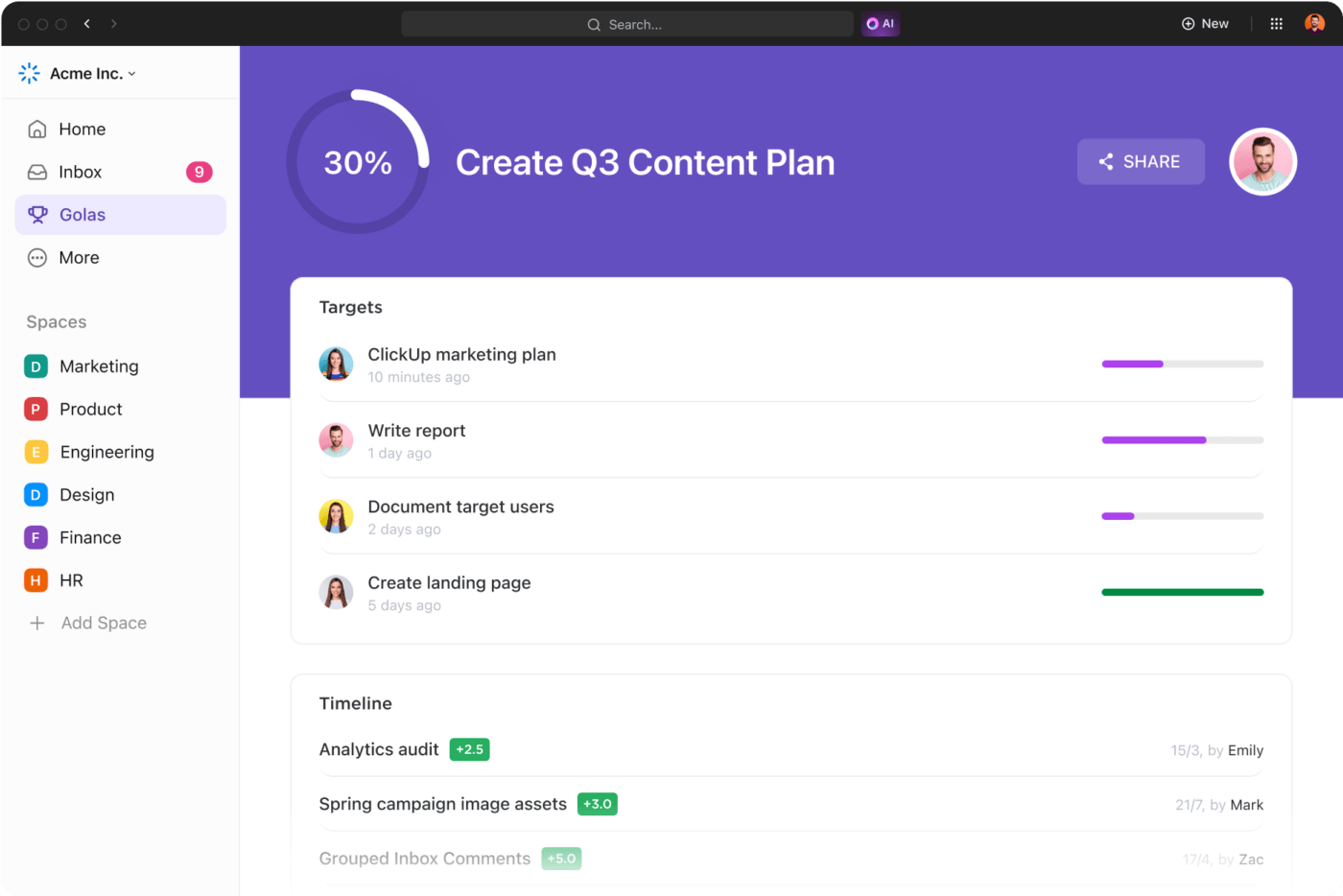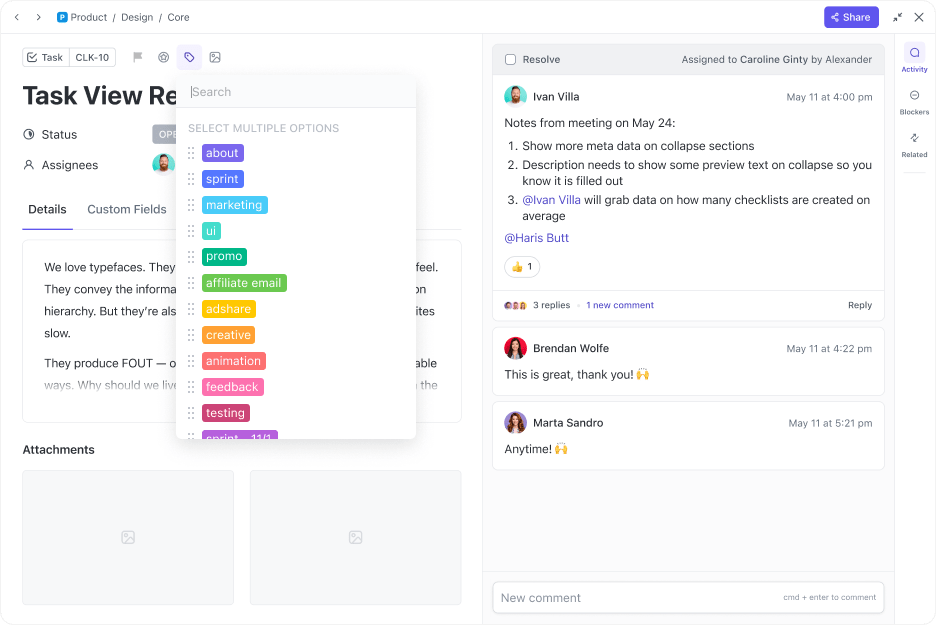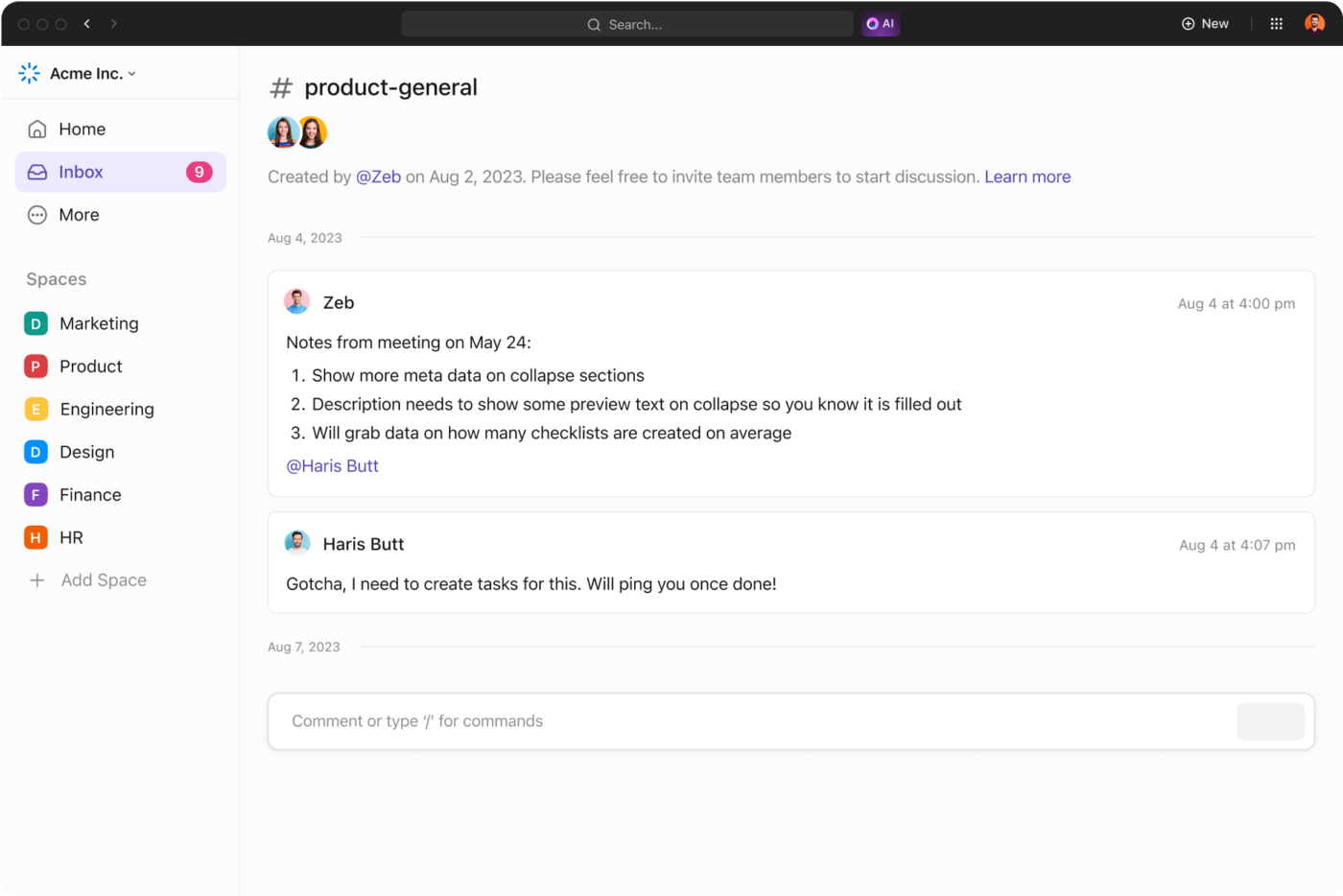

Anyone in the finance profession would confirm that planning a marketing budget is both an art and a science. You go super generous with funds, and there’s the risk of blocking other growth investments. But if you spend too little, your whole sales funnel will go awry! 😅
Calibrating your marketing spend is a non-negotiable part of aligning your business goals with overall marketing initiatives. But there are several roadblocks to slow you down, such as the lack of reliable market predictions or process silos. According to statistics from MDG Advertising, 91% of companies believe that inaccurate data is the prime culprit behind misspends in marketing.
The average marketing budget constitutes almost 10% of the total company revenue, and no company can afford to waste that kind of resources on a budget that risks overspending and poor ROI. Luckily, we have just the right set of tips and strategies to help you out.
Our marketing budget guide will help you explore some core concepts to devise well-rounded marketing investments and avoid common pitfalls.
Bonus: We’ll also explore how to master effective marketing budget allocation with ClickUp, a free-to-use marketing and project management solution.
What Is a Marketing Budget?
Any marketing plan aims to improve the company’s return on investment (ROI). You need to see if the campaign translates into enough revenue to justify the marketing costs. A marketing budget is your framework to carefully outline every marketing-related financial allocation within preset standards, ensuring you’re spending money toward fixed avenues.
It encompasses every aspect of the marketing spend, specifying the who, what, why, and how of each anticipated expense, typically spanning across a quarter to a full fiscal year.
This strategic allocation of resources ensures that your marketing strategies harmonize with overarching business objectives—you’re channeling funds into campaigns poised to yield the highest ROI and avoiding marketing investments that are not lucrative.
A proposed marketing budget generally undergoes scrutiny, approval, and allocation, often months ahead of the target marketing campaign. However, it’s a dynamic document, and you can always change it according to current business objectives, target audience, competitive landscape, and market trends. ⚡
Pro tip: Creating a budget for marketing spending is way easier if you have the right framework—i.e., marketing budget templates—to start with. Why not explore the ClickUp Marketing Budget Template?

It helps convert even the most complex marketing budget outlines into easy-to-follow visual budgets. The marketing budget template’s comprehensive single-page overview helps you both forecast and make adjustments as you go.
Why is a marketing budget important, and is it worth making one?
Many marketers would argue that creating and updating a marketing budget is time-consuming as you can never get 100% accurate estimations. However, designing a robust marketing budget plan offers numerous advantages, enabling you to:
- Plan ahead: Allocate funds for projects several months in advance, ensuring effortless execution
- Expand resources: Recruit freelancers and niche marketing staff to smoothen your creative space
- Assess ROI: Calculate your Marketing Return on Investment (MROI) to make informed decisions that align with company objectives
- Demonstrate value: Show the value of marketing activities and budget allotment for all projects to company executives
- Measure progress: Compare year-on-year progress, tracking the effectiveness of each marketing project
Where does a marketing budget go?
In the past, traditional marketing teams used to prefer physical flyers, banners, and television ads for the company’s success. The situation has completely flipped in today’s era, thanks to a noticeably higher focus on digital marketing.
According to a 2023 Deloitte survey, companies spend over 50% of their marketing budget on digital marketing, with 19% going toward mobile activities and 17% toward social media ads.
Based on the latest trends, here are the cost centers of a standard marketing campaign:
- Paid advertising, including PPC, banners, and TV ads
- Conferences, trade shows, or in-store exhibitions
- Brochures, graphic design, and product packaging
- Content marketing (blog and social media posts)
- Freelancers, influencers, and agencies for public relations (PR) tasks
- Surveys, focus groups, and market research activities
- Software, website maintenance, and digital infrastructure
- Giveaways and promotional materials
- Miscellaneous operational expenses
What does a written budget for marketing campaigns comprise?
So, drafting a budget is not just about including financial information. You must add contextual components to your predictions so that anyone who reviews them can get a complete picture of the initiative.
A well-rounded marketing budget typically comprises of:
- Financial objectives: A clear outline of financial goals tied to marketing strategies
- Positioning strategy: Defines how the brand positions itself within the market
- Brand strategy: The overarching strategy to boost brand identity
- Product or service overview: Comprehensive details about the products and services and their unique value propositions
- Specific budget goals: Detailed targets per product, distribution channel, or customer service
- Sales plan: Strategies devised to drive sales in alignment with marketing efforts
- Major campaigns: Identification and outline of significant marketing campaigns
- Progress review dates: Scheduled timelines to evaluate budget status against set benchmarks
How to calculate a reasonable marketing budget: Common approaches
The U.S. Small Business Administration guidelines recommend allocating around 7–8% of your total gross revenue to marketing. However, revenue-based marketing budgets can be pretty one-dimensional.
Investing 8% of your revenue for marketing is only possible if your profit margins are reasonably wide. While it’s easy for established businesses, those breaking even, or worse, operating at a loss, cannot commit to this percentage.
There are a couple of other approaches for calculating your target marketing budget, such as:
- Competition-matched budgeting: You’re willing to spend as much as your competitors. This is typically the principle used for calculating digital advertising spend
- Zero-based budgeting: You don’t rely on previous records but start a budget from scratch and justify each expense to get approval. You have to:
- Identify your current marketing goals
- Prioritize which marketing tactics need more resources
- Monitor every allocation to avoid overspending
- Objective-based budgeting: You build a budget based on the target objective with little to no cost restrictions
6 Steps to Creating Successful Marketing Budgets
A marketing budget is a collaborative effort of your company’s finance executives, marketing teams, and program leaders. Creating an effective marketing budget is more than just people and numbers, though—it’s about outlining a path for growth and strategic action.
Here’s a quick rundown of six crucial steps for creating your marketing budget. To simplify the process, we’ve demonstrated functionalities with the ClickUp Marketing Suite to break down certain steps. 🌟
Step 1: Define your marketing style and goals
The first step to creating a marketing budget is outlining the objectives that justify it. For example, you can consider setting goals focused on:
- Increasing sales
- Accelerating lead generation
- Elevating brand awareness
- Brand repositioning
However, precision is vital. Vague weekly goals like “increase sales” lack clarity and direction. Here’s an exercise you can do:
- Note down your overarching business goals
- Determine short-term and long-term marketing objectives:
- Short-term goals focus on immediate improvements, like reducing website bounce rates or pushing online advertising
- Long-term goals comprise broader achievements, such as search engine optimization or efficient marketing automation
- Establish key performance indicators (KPIs)—they’ll later help quantify specifics within the budget
Use ClickUp Goals to set up your marketing goals with measurable KPIs. Track goals weekly, monthly, quarterly, and annually, linking them directly to specific tasks or projects, fostering continuous improvement across your marketing endeavors.

Tip: If you’re struggling to etch out your marketing goals, adhere to the SMART (Specific, Measurable, Attainable, Relevant, and Time-bound) criteria for focused goal setting. The framework allows you to keep your goals realistic and doable.
Step 2: Research what your competitors are spending on
Once you know your goals, start researching your competitors’ marketing spend. To get started, ask these two questions:
- Who performs well in the industry?
- What marketing strategies and budget allocations do they employ?
Examine channels like website marketing, social media, video marketing, and PPC ads. Study competitors’ marketing tactics, message frequency, and success models. Identify similarities and differences with your own to carve your unique selling proposition.
Need a quick tool to compare? Use the ClickUp Competitive Analysis Template to map out the status of all industry leaders and competitors. It offers an interactive view, allowing flexible brand modification and positioning. You can evaluate their budget performance based on preset metrics or identify their strengths and weaknesses and craft smarter strategies.
Once you’ve got the numbers in place, you can immediately start documenting your budget using ClickUp Docs. Add nested pages, customize styling, tables, and real-time edits with your marketing colleagues to devise your proposed budget. 🧮

If you don’t want to waste time writing research reports, use ClickUp’s AI Market Research Survey Generator to get well-structured marketing documents produced within seconds.

Step 3: Create priorities for your marketing spend
Marketing teams must differentiate between essential expenses and unnecessary add-ons. By organizing your budget and correlating spending with outcomes, you can identify where to invest and where to cut back.
Take PR campaigns, for instance—here, you need to focus on tools that engage your target audience effectively, which would justify the amount you spend on acquiring those tools.
Using performance data analysis, you can identify the marketing channels with the highest ROI and allocate a budget based on each channel’s impact and potential returns.
The ClickUp Priority Matrix Template simplifies the process with a 2×2 matrix based on urgency and importance. You can use color-coded sticky notes to display marketing initiatives based on the ROI they generate. For example, if your blog post campaign generates the highest ROI, you can label it as High Importance in the template.

Step 4: Set a cash reserve for unexpected costs
Be very specific when you allocate the budget—keep elements like expected returns and funding schedule super transparent. However, even the most detailed budget planning cannot always guarantee your actual spending. So, what if you face a shortage of funds down the line?
Set aside a portion of your budget as a contingency fund for unexpected costs like thwarting aggressive competitor moves or capitalizing on sudden opportunities. This reserve should typically be at 10% of your total budget. It serves as a safety net and ensures flexibility in responding to unforeseen events.
You can now track your marketing budget allocations in versatile spreadsheets using ClickUp Accounting. This feature suite helps streamline financial tasks, track marketing spend, and generate reports. You can categorize your funds (like Cash Reserve or Google Ads Spend) using Custom Fields and Tags to make tracking easier.

You can also set up ClickUp Automations to monitor when you’ve overspent and would need to make adjustments. Automations in ClickUp are no-code and customizable.
Bonus: Follow your marketing budget in action using the ClickUp Accounting Template and oversee invoices, fund status, sales records, income, and revenue projections.
Step 5: Send the budget for approval
After defining costs and setting up cash reserves, give your marketing budget some final touches and send it for approval. Who you send it to depends on your team hierarchy and approval network.
ClickUp has multiple communication features to help you stay in the loop or seek clarifications during approval workflows. The platform’s Chat view is a valuable tool for exchanging key information during budget approvals and special project updates. If you’re the one approving, you can also employ ClickUp Proofing to leave feedback on sections of the budget.

Step 6: Implement the budget and collect feedback regularly
Don’t just implement your budget and forget about it. Regularly reviewing your marketing plan and budget is essential to keep up with evolving business needs.
Use analytics from your marketing software to assess ROI and adapt your budget based on market changes or campaign effectiveness. Measure KPIs for each campaign and channel to optimize budget allocation.
A smart way to monitor your marketing budget is to set up finance-related pie charts and graphs in ClickUp Dashboards. From prioritization and deprioritization to progress tracking and team performance evaluation, it’s the place to be if you want a bird’s-eye view of your projects. 📈

Monthly or quarterly, scrutinize actual spending against performance metrics, adjusting allocations in real time—the changes are immediately reflected in your Workspace.
ClickUp also makes it easy to share your updated business strategy, sales calendar, product releases, and target customer documents with your marketing team. If you want, you can request their feedback through customized ClickUp Forms.

If you end up with new budgeting optimization tasks, organize them in the platform’s Calendar view so you don’t miss any deadlines.

Creating a Marketing Budget: Common Mistakes
Setting up your marketing budget involves numerous intricate components, leaving a lot of room for errors. Small business owners often struggle with marketing budget allocation as they cannot afford professionals to guide them.
Keep an eye out for these common budget planning mistakes.
Relying on last year’s marketing budget
The market undergoes continual shifts as consumer priorities evolve. What worked effectively in one year might lose its impact in the next.
Thoroughly reassess your market budget to understand how technological advancements, political shifts, emerging social movements, and other factors have influenced consumer behavior. Timely customer insights will help you identify marketing opportunities or pull out bad investments before they lead to huge losses.
Poor balance between traditional advertising and alternative marketing
Businesses should balance investments between time-tested and emerging strategies to remain agile.
Finding the perfect marketing strategy often involves trial and error. It’s rare to find an ideal approach on the first attempt. However, don’t go overboard with experimentation. Instead of adopting random, unfocused approaches, go for some marketing initiatives that have proven to work reliably.
Still second-guessing your ideal marketing budget allocation? The 70-20-10 rule might help you achieve a balanced framework. Here’s how it works:
- 70% of your budget goes to proven strategies that have demonstrated success
- 20% to explore new strategies
- The remaining 10% is left for experimental approaches, allowing room for innovation and risk-taking
Over-prioritizing new customer acquisition
While there’s often considerable emphasis on acquiring new paying customers in marketing, there’s substantial value in nurturing existing ones.
Research indicates that acquiring a new customer can cost about five times more than retaining an existing one. Additionally, studies by Bain & Company’s Frederick Reichheld show that a mere 5% increase in customer retention rates could substantially boost profits by up to 95%.
Building loyalty among your existing customer base is not only cost-effective but also fosters a stronger and more enduring customer relationship, contributing significantly to long-term success.
Relying on inaccurate data
Analytical data facilitates informed decision-making, allowing you to take calculated risks, sometimes relying on instincts or intuition. Utilizing inaccurate or unreliable data can significantly impact your budget planning process.
However, having copious amounts of data doesn’t automatically ensure its quality. It’s essential to employ robust data-cleaning strategies to eliminate duplicates, inaccuracies, and other forms of bad data.
Enjoy Seamless Marketing Communications and Budgeting with ClickUp
Tired of marketing budgets that fizzle instead of flourish? Crafting a comprehensive marketing budget can feel like juggling spreadsheets in a circus tent. 🤹
But with an all-in-one solution like ClickUp, brainstorming, planning, and executing is as easy as pie. Plus, its AI Assistant can help your team be more efficient over time. Sign up for free to discover more.



